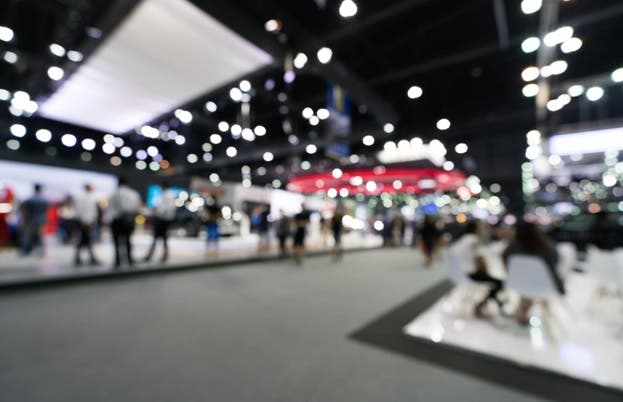Attending trade shows can be a great way to learn about your own industry (and competitors), engage with customers (and hear their concerns and desires), and so much more. Trade shows can even be a great avenue for capturing leads that you can use for marketing purposes.
At the same time, not planning for the trade show can result in an enormous waste of time, money, and human resources. You know what they say. Failing to plan is planning to fail.
This basic guide should give you a framework to pull off your best trade show yet.
Profile the Event and Attendees

First thing first, you need to know who will be there. There is no point in going to a trade show that is irrelevant to your industry, or which will not attract potential business for you.
So do your research: figure out the demographics of those attending, and where they will be coming from. Look into which competitors and business partners of yours will be there.
Once you know the target audience, you can plan marketing strategies and goals more effectively.
Set Goals and Define Strategy
Once you have an idea what sort of trade show you will be going to, you need to know what you want to accomplish.
Is this just about brand exposure? Are you trying to improve brand image or positioning with some positive public relations?
Are you looking to capture leads for remarketing? Do you want to get leads to sign up for your newsletter or grow your social media presence?
Any and all of these – among many others – can be potential goals for a trade show. You don’t need to turn a profit from the event (in fact attendance is an expense) but you do need to come away with something, and it’s usually some sort of customer or industry intel or information.
Set Your Budget
Once you know what your goals are, you need to set a budget before you can do anything else. Setting a budget will determine who (and how many people) you can bring, what promotional products you can give away at the tradeshow, and what sort of kiosk/booth/display you will be able to put together.
It will also determine accommodations and travel expenses, which can vary depending on the trade show.
Either way, you need to figure out what you need to accomplish your objectives, and make sure you’ve budgeted adequately.
Get Your Team Together
You’ll want to bring along the members of your staff that are best suited to help you accomplish your goals.
If you want to capture leads, bringing along members of your sales or marketing team might be the way to go.
If you want to boost brand image or awareness, perhaps a product specialist, developer, or engineer is more in line with your strategy.
Either way, who you bring is crucial to accomplishing your objectives.

Prepare Accommodations
Make sure you are ready with travel and lodging accommodations well in advance of the trade show date – and this includes transportation to and from the airport, train station, or whatever other option you will be taking.
Also, make sure your hotel rooms are booked ahead of time and everything is squared away before you leave. You want to make this as painless as possible. Your mind should be on setting up at the show and promoting what you have to offer, not on travel.
Be Ready Ahead of Time with Branded Promotional Products
For many participants in trade shows, having something to give away is key to generating recency and bringing back leads.
Branded promotional products are great, and some common options include pens, branded mugs, t-shirts, and tote bags.
Items like these are likely to be used by the recipients and will increase your brand exposure even after the show is done.
With that said, more specific and relevant promotional items are also in order. For instance, if you sell electronics or are in the tech sector might prefer to give away branded PopSockets or AirPods.
Really, the list of opportunities is endless. Just look for a way to make your promotional products as relevant as possible to what you produce or sell. In that case, they will not only increase brand awareness, but will also add value to the lives of the recipients.
Prepare Your Marketing Materials

In addition to branded promotional products, you’ll also want marketing materials to attend them. This includes but is not limited to studies, white papers that represent your industry/business, business cards, pamphlets and brochures, promo flags and banners, and product data sheets.
Attract Visitors and Be Ready to Engage Them
Once you get to the event, the critical period begins – this is where you must actually attract and engage with customers.
Do not wait for customers to come to you. Some may, and they may be excellent leads, but you don’t want to let opportunity walk by.
Go out of your way to engage with passersby. Ask questions, use humor, do whatever you think you need to do within reason to stimulate interest and then be ready to take it from there.
Capture Leads and Plan a Follow-Up
You don’t just want visitors to your kiosk or booth to see what you have and then bounce, even if they do so with some of your promotional products and marketing materials in tow. Some will reach back out, many, if not most, will not.
Have a sign-in sheet or ask for customers to enter their emails. Be ready to write things down or have a digital sign-in or sign-up. Ask them to follow you on your social accounts. Obviously you can’t force this sort of participation but it’s better to try to capture leads than to be passive about it.
And then, with whatever leads you do capture, plan a follow-up. Either add them to your business development’s lead database, or use them for social media marketing or email blasts in the future.

Your Most Successful Trade Show Ever Starts Right Now
Now that you have a framework put together, you can get out there and have your most successful trade show to date. Just make sure you are prepared with high-quality branded, customized promotional products, which you can obtain right here at iPromo!

